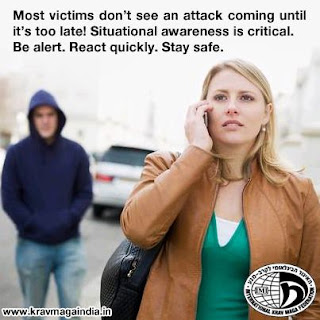As we enter a new year many of us resolve to make positive changes to our lives - improve our fitness, spend more time with family and friends...... Some we follow through on, some we don't.
We suggest you commit to your well being - particularly your personal safety.
Here are 8 self defense resolutions to promote your safety in 2013 - and beyond.
- Minimize Your Distractions. Avoid walking/driving and testing for instance. Distractions hinder awareness.
- Be mindful of how you share personal information. Announcing your trips on Facebook? Please don't. Telling strangers you live alone. Please don't.
- Identify escape routes. Make it a habit in 2013 to be aware of how to escape to safe places.
- Establish some fitness goals. We don't all have to be Olympians but improving your fitness does hep your chances to defend, escape and avoid.
- Minimize your stuff. Try to avoid carrying multiple items. It makes you an easier target and as elusive as a sloth.
- Saying no isn't rude. Don't feel compelled to open your door to a stranger, light his cigarette, lean into his car to give directions..... Say sorry (this comes naturally to most of us Canadians) and err on the side of caution.
- Be discreet about your valuables. Don't flash money, jewellery, iPads, etc.......
- Try a self defense class. Surf the net, make some calls, talk with friends. Find a school that suits your needs. (Let's say, oh I don't know, a Krav Maga class?) If you can't or don't want to commit to ongoing classes ask about workshops, semi-privates....
Enjoy the rest of your holidays, have a happy new year, and be safe.
Christopher Gagne
Lead Instructor, International Krav Maga Federation, Toronto
torontokrav@rogers.com
416-657-1028
Ikmftoronto.com







